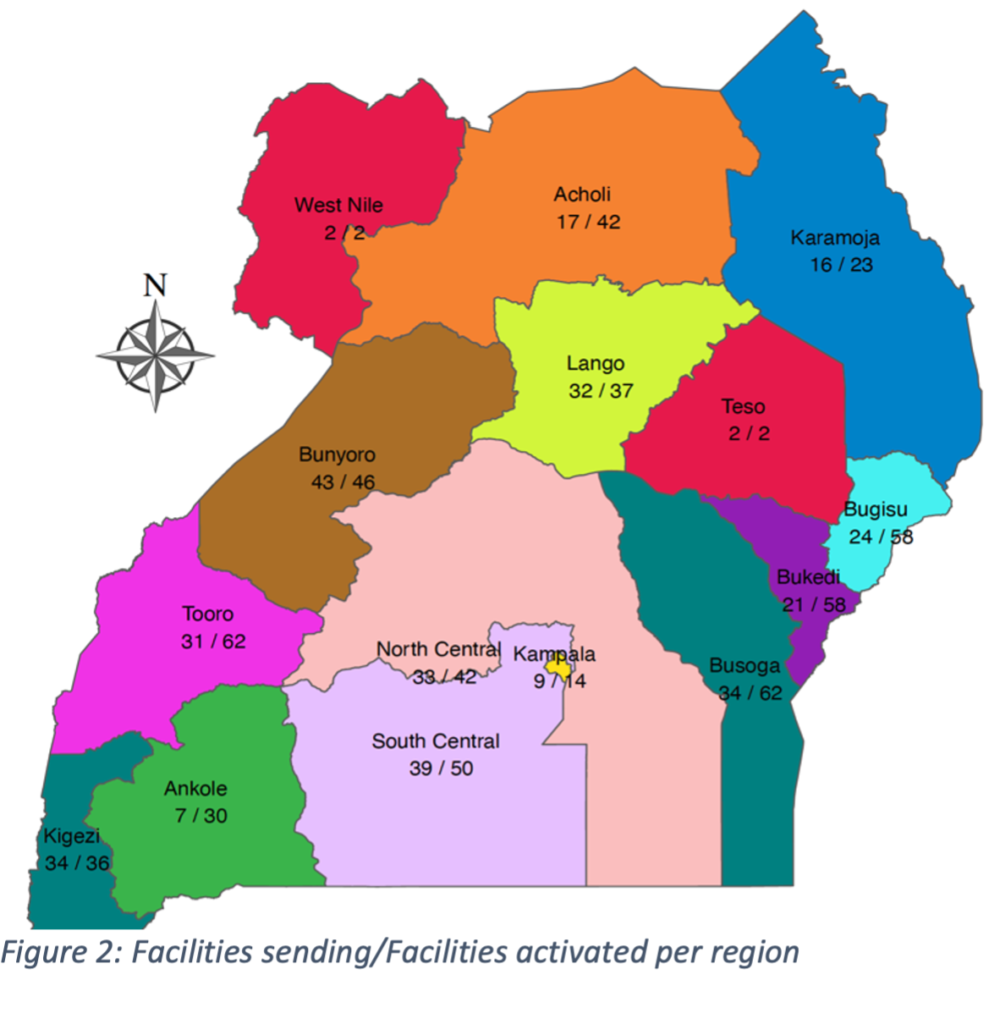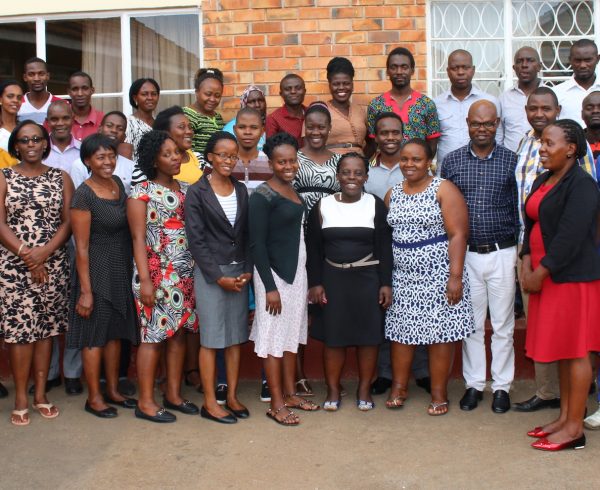The Monitoring and Evaluation Technical Support (METS) Program, in partnership with the Ministry of Health (MoH) and various implementing partners, is spearheading the HIV Case-Based Surveillance (CBS) initiative across Uganda. This effort utilizes electronic medical records (EMR) and digital health information systems (HIS) to enhance data collection and monitoring of HIV trends.
By February 2024, CBS had been activated in 504 health facilities, with 349 sites (69%) actively transmitting data (see map below). Data is collected using primary HIV data collection tools covering prevention, care, and treatment, which is then entered into the EMR and transmitted via the internet to a central database hosted by the MoH.

Significant gaps in data transmission persist, as the majority of regions have not achieved 100% transmission from the activated sites. Challenges such as internet access and cost are being addressed with regional partners to improve coverage.
Trends of New HIV Diagnosis
An analysis of HIV diagnosis trends over a 20-year period (2000-2022) was conducted using data from 349 health facilities across 109 districts, encompassing 202,152 clients and 3,228,359 clinical visits. The data revealed an increase in new HIV diagnosis over time, peaking in 2014 and 2018, before starting to decline. Notably, the number of diagnoses among females consistently exceeded those among males each year (see figure below). This is consistent with findings from the Uganda Population-Based HIV Impact Assessment (UPHIA 2020-2021).

CBS complimenting other HIV surveillance programs
The ongoing implementation of HIV Case-Based Surveillance by METS and MoH is crucial for understanding and addressing HIV trends in Uganda. Despite challenges in data transmission, the collected data provides valuable insights into infection patterns and highlights the need for targeted interventions, particularly among females. Continued efforts to improve internet access and data transmission will boost the effectiveness of this surveillance system, ultimately contributing to better health outcomes for people living with HIV in Uganda.
Next steps include continued scale up of CBS implementation to reach 80% of ART sites; improving data transmission from facility to the national repository to achieve at least 90% of the CBS activated sites; and strengthening data analytics and use of the data for program improvement. Additionally, the program plans to disseminate CBS information products during the planned annual meeting in September 2024.



